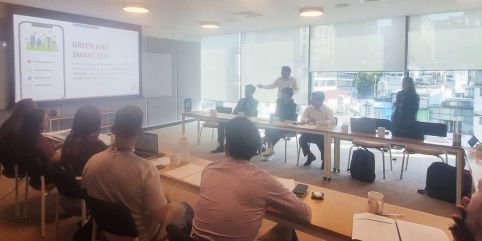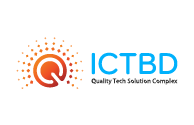Quang Trung Software City (QTSC), the first and largest software park in Vietnam, has a total area of 43 hectares as originally designed. To date, QTSC has attracted around 150 information technology (IT) companies, with five of them employing more than 1,000 people. QTSC now has 20 office buildings, five IT training centers, four bank transaction offices, 20 parking lots, apartments for experts, dormitories, underground power lines and wastewater treatment system, a kindergarten, a healthcare center, an incubator, and a business support center, among others. The software park is home to about 20,000 workers and students. |
International consulting group KPMG ranks QTSC third among eight technology parks in Asia based on indicators such as occupancy, incentive policy, and telecommunications infrastructure. QTSC is fourth in terms of size, efficiency of businesses, foreign direct investment (FDI) and human resource quality. All in all, QTSC has emerged as a technology park with outstanding incentives, and investors from a wide range of sectors and with sustainable growth. In the development process, QTSC has faced a slew of challenges in maintaining the 24/7 readiness of infrastructure and security, and improving management and service quality to meet the rising demand of enterprises. The software city has been exploring ways to better management and catch up with global integration trends so that it can be comparable to technology parks elsewhere in the world. QTSC has actively applied state-of-the-art technology to facilitate internal management since the beginning of 2016. The move is aimed at developing it into a smart city model with three main objectives: improving the quality of administration, raising the satisfaction of the internal community, and developing the brand of Quang Trung Software City. Therefore, QTSC will focus on three steps in order to achieve these goals. The first is to build and implement IT applications for internal management, and support and serve the community on the digital platform. The second is to connect technology and data applications on the same platform. The last is to share, analyze and use data, as well as predict future scenarios to map out development policies. These steps will be simultaneously carried out and updated to produce immediate results. So far, QTSC has achieved positive results such as: - SMS application: shortening the time needed to inform customers from two days (equivalent to 2,880 minutes) to two minutes, and reducing the service fee from VND15,000 to VND3,000 per customer - Public lighting: saving 35% of electric power consumption - Environment: well managing 11 wastewater parameters such as chemical oxygen demand (COD), biochemical oxygen demand (BOD), pH, total suspended solids (TSS), ammonium, nitrate, sulfur, phosphate, and total grease in real time, and instantly issue warnings whenever any parameter exceeds the permissible level. - Internal traffic: bike sharing helps shorten travel time by three to seven minutes each commute. - Internal safety and security: having detected number plates of four people who caused disturbance and handed them over to the local police station. Based on these initial results, QTSC is striving to optimize existing apps and develop new ones, gradually integrate data and apps on the same platform, and build open platforms for third-party customers. The application of smart urban model at QTSC is a long-term process and is one of the primary objectives of turning QTSC into a leading software city in Asia.
Source: QTSC |
More articles:
Latest news
-
QTSC meets with startup community and investment funds in HCMC: Strengthening connections and support for the science and technology innovation ecosystem
-
Inviting to join the program “Together for a Green QTSC”
-
QTSC calls for votes for two solutions in the 2025 Creative Science Contest
-
Aegona is hiring Business Development/Sales Executive/Account Executive





 Tiếng Việt
Tiếng Việt












